|
Section
0401 |
|
|
June
2015 (Volume
65 - Issue 6) |
|
Our
objective: To increase awareness,
interest, and involvement in Section activities and quality-related subjects. Visit our web site at http://www.asqmontreal.qc.ca/ |
| 10 - Site Members | 16 - Recertification | |
| 17 - Unemployed Member Dues | ||
| 18 - Feedback/Advertising Rates |
1.
Next
Event
ANNUAL
GOLF TOURNAMENT Date: Friday, July 3, 2015 Time: Day and Evening Place: Base de Roc 2870, Base de Roc Joliette, Quebec J6E 3Z1 |
2.
Ad
/
Publicité
|
||||||||||||||||||||||
|
This year, it is the 26th edition of the ASQ 401-404 Golf Tournament. You should not miss it! Once again, there will be special entertainment during the evening. This time, a workshop will be animated by Jean-Marc Legentil, Management Consulting Consultant and Contractor, Bell Nordic Conseil and Josée-Anne Bergeron, Directrice Conseil, Bell Nordic. The subject will focus on the M O O Z. It is an experiential activity to help teams evolve towards a goal. Riddles to solve, sharing opinions, and reflecting on our attitudes and behaviors when solving problems will be explored. Fun guaranteed! Invite one of your friends to participate in this annual event. The cost is $100, including golf and dinner, or $50 for dinner only. Complete the registration form. For sponsorships, contact persons are listed on this form. An enjoyable time for everyone and a lot of participants! Ovide, Denise, Marie-Ange and I are looking forward to welcoming you! 4. The Editor's Corner
A quick word to wish everyone reading this a very good and enjoyable summer. Enjoy the warm weather, as here in Montreal it can disappear quite quickly. Try and make everything you do this summer of the highest quality possible. As well, thank you for reading this Newsletter. I truly enjoy putting it together 9 out of 12 months of the year. See you in September! *********************************************************
Any feedback? Click on the link in the bottom right corner of this section and let me know. Thanks. |
|||||||||||||||||||||||
5.
A Word
from
your Section Chair
I was lucky enough to be offered excellent tickets to attend the Grand Prix du Canada 2015 at the Circuit Gilles-Villeneuve. It was a great race and to double the luck, the weather was just perfect. Being seated facing the hairpin (“L’épingle”) has the advantage that the cars must slow down to about 56 km/h, so you see both the deceleration and acceleration. This is a very limited segment of the track and many seconds can elapsed before you see the next car coming. Enough time to think about quality and the upcoming “Word from the Section Chair”… And the following quote came to my mind: "If everything seems under control, you're just not going fast enough." - Mario Andretti (retired F1 racer and world champion). I saw some daring passing moves during the F1 race. It was obvious that the driver initiating the pass was taking significant risks, the payoff being a better position in the race if successful. Taking the car to greater speed while negotiating a difficult race track segment requires sacrificing some degree of control. Taking a process (manufacturing or transactional) to the next level often requires going beyond control. Quality science has become so broad today. It encompasses quality assurance, quality control, quality management, continuous improvement, and innovation, to name a few. At some point, to satisfy the customer better than our competitor, the process has to be improved or even redesigned. To be successful at breakthrough process improvement or innovation, an organization must take risks. Even when the risk can be precisely quantified mathematically, different people within the same organization have different tolerance levels to the same risk figure. To insist on zero risk, or, on the opposite, always go for the riskiest path is not conducive to quality progress. Striking the right balance between risk taking and risk aversion is rarely easy. Part of it probably has more to do with art than science. As quality practitioners, we should welcome the opportunity to take risk in our job and cultivate this balancing act. What that means, in my situation for example, even if I have a good mastery of the methods available to control a given process, I should not be afraid to say that the capability level would not be achievable whatever the control method applied and recommend a process redesign. Design and redesign have more uncertainty attached than control, and are inherently more risky. In quality, failure due to underestimated risk means losing a battle, but rarely the war. For the F1 driver, it might well mean losing his last battle. Fortunately, this edition of the Grand Prix du Canada did not result in any major incidents. It was a great race and thanks to the one who gave me the tickets! |
|||||||||||||||||||||||
6.
Had
You Come
to the
Last Event
By
Eric Stern, ASQ Senior Member, CQA,
Publicity co-chair
 Had you come . . . PECHA KUCHA It
was my third
participation in a Pecha Kucha demonstration. Let me start with my
conclusions.
Pecha Kucha is a great tool for learning to produce coherent, condensed and creative presentations. They can be great teasers, introductions to new subjects, discussions of very precise narrow subjects. Their rigid structure of 20 slides shown each for 20 seconds prevents them for being used for thorough detailed discussion of complex difficult subjects. Somebody commented that it is easy to lose attention during lengthy presentations. True, but some subjects need to cover enough details. I suspect that in those cases, it may be possible to split those concepts into simpler short segment; as they say “if you need to, eat the elephant in small slices”. Eric Hosking presented his view of an optimal tool for “Problem Solving”. 36 tools for solving problems are in the inventory of his company, UTC. Often the first responses to problems are traditionally less than optimal. The advantage of the Shainin Red X method that he prefers is that it arrives faster at solutions. It starts from the outcome and converges to the root cause by focusing on the main driver of the variation. It uses models that show how the system behaves and uses measurements that are useful for the diagnostic. It looks for the difference between the worst of the worst and the best of the best. It relies on the understanding of the process. In the background it verifies the quality of the data, it checks whether intermediate measurements are required, it relies on trained practitioners, prefers to start looking at the system. It focuses on current production and it relies on management support, ends up validating the solution on the production line no matter how disruptive, and completes the process using the 5 whys and Cause and Effect Analysis. For the well hidden problems that have been around a long time, the recommendation is to use the best trained people in the business, most likely outsiders. Anne-Marie Pizzitelli from BSI Canada presented “How to Market Your Business”. She defined marketing as activities that work to make the business successful. The numerous types of activities and specific tools at the disposal of marketing professionals are impressive. The condensed presentation made it clear how important marketing is for a business and how in a competitive world success depends on the effective usage of these tools. It became clear that organizations that effectively use the multitude of available traditional and high-tech tools have a distinct advantage. I also noticed the very large amount of information that can be condensed by showing the images of logos of software and applications. For individuals and small organizations Anna-Marie stressed the value of Linkedin, e-mail marketing, building of an email list using a form on the web site and Google analytics for lead generation. She also mentioned customer testimonials, free white papers, sector market research, industry list brokers, AdWords and even telemarketing to get to the right person. In the context of the requirement for leadership in the future ISO 9001:2015, Jim Moran stressed the “working in the system” distinction from the management role of “working on the system”, the focus on behaviour more than on processes. He illustrated with optimistic looking faces and historical examples the importance of inspiration, focus, persistence, attention to behaviour, system management, unity of purpose and direction, supportive environment, communication of goals and objectives, shared values, fairness, trust, provision of resources and training, recognition of contributions, leading by example. I suppose that some of these parameters are not explicit in the new ISO standard because they cannot be directly evaluated despite their clear importance. David Tozer presented “Risk Assessment for the Inspection Process”. A long time ago I was thoroughly familiar with the statistical annotation of conditional events. In this case the 20 second limitation on explaining and recording to my brain the significance of the terms prevented me from narrowly following the logic of the argument. François Pageau helped by summing up the conclusion that it is important to pay attention both to the alpha and the beta risks in order to correctly understand inspection results and to set up adequate inspection methods that conform to the accepted risk profile. Overall, Pecha Kucha may not be the optimal tool for presenting the details of complex situations; those presentations become clearer with more steps to cover the details and more time for specific slides to give the audience a chance to interact and absorb the information. 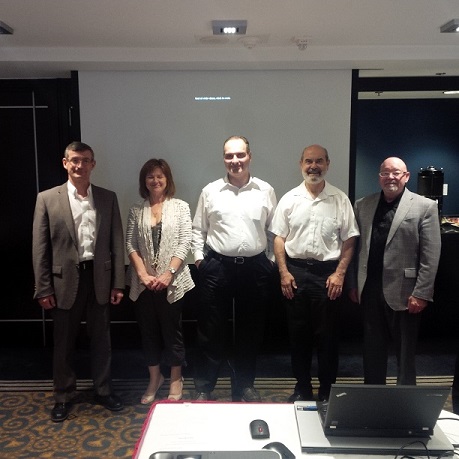 **************************************************
Eric Stern, CQA, senior member, publicity co-chair, developmental coach and consultant at Expertech CMSC, expressing his own opinions (ericst@iseffective.com). For networking with local quality professionals explore these groups: http://tech.groups.yahoo.com/group/Quality_Montreal/ http://www.linkedin.com/groups?gid=90170 |
|||||||||||||||||||||||
7. Voice Of The
Customer
Our survey is underway and we ask that you take the time to fill out the survey card - no more than two minutes to do - and then return it to us. We will use your input to help set our agenda of conferences and activities over the next year or two.
8.
2015 Planned Events
Date, time, and location will be confirmed as we progress into the year. Most events are planned for Wednesday evenings and are held at the Sheraton Montreal Airport Hotel. Watch the Newsletter and our web site for further details.
Date Event |
|||||||||||||||||||||||
9.
Welcome
to our New Members
MAY
2015
Manuel Campillo David Flood Amir Hossein Hejazi Haitao Hu Walter D. Ince Rahim Laljee Matthew Leger |
|||||||||||||||||||||||
10.
Site
Members
ASQ Montreal Section thanks our Site Members: |
|||||||||||||||||||||||
11. The Interview Corner
We have no interview for you this month. Please check back in September 2015! 12.
Other
ASQ
Events
|
|||||||||||||||||||||||
13. ASQ News2015
Future of Quality Report: Quality Throughout Team
Excellence Award Winners Announced at World Conference
|
|||||||||||||||||||||||
14.
ASQ
Montreal Section Education Program 2014-2015
By
David
Tozer,
Ph.D., ASQ CQE and SSBB, Education & Audit Chair Having ASQ certification gives you an edge in the market and can significantly increase your income. ASQ Certification often leads to higher paying employment. The money invested in education and certification increases chances of finding employment quickly in the down sizing environment we live in. People who take the section sponsored refresher courses, and spend at least twice as much time as spent in the classroom on self study, have an 80%, or better, chance of passing the examination on the first attempt. Certified Quality Engineer Topics include: quality concepts, cost of quality, human resources, team formation and group dynamics, inspection, metrology, sampling, reliability, quality standards, quality audit, statistics, design of experiments, process improvement, liability, and modern management methods for improving quality. Certified Six Sigma Black Belt Topics include: quality concepts, cost of quality, enterprise wide deployment, business process management, project management, team formation and group dynamics, define, measure, analyze, improve, control, lean enterprise, statistics, design of experiments, and design for six sigma. Certified Six Sigma Green Belt Topics include: quality concepts, cost of quality, enterprise wide deployment, business process management, project management, team formation and group dynamics, define, measure, analyze, improve, control, and statistics. Certified Manager of Quality/Organizational Excellence Topics include: quality concepts, quality planning, customer focus, quality standards, project management, cost of quality, team formation and group dynamics, human resources and improvement.
Certified
Quality Auditor Topics
include: quality concepts,
team
formation and group dynamics, management responsibility, audit
objectives, audit preparation, audit conduct, audit reporting,
sampling, and basic statistics.
Certified Quality Inspector Topics include: quality concepts, team formation and group dynamics, geometry, metrology, reading drawings, mechanical processes, statistical process control, inspection, and sampling. Calendar and Registration Form Questions? In house courses, etc. Contact Dr. David Tozer, Ph. D. (514) 694-2830, education@asqmontreal.qc.ca
|
|||||||||||||||||||||||
15.
Executive
Committee Meetings & Officers
Section Executive
Committee
(Leadership Team) Meetings are held at different locations, starting at
6 PM. The next regular meeting is tentatively scheduled for : September
9, 2015 Consult the List of Your Executive
for
2015 here |
|||||||||||||||||||||||
16. RecertificationIs
Your
Recertification Due?
Look at your wallet card to see when your present certification is due to expire. If it says December 31, 2014 you are in time. Get your journal, with supporting objective evidence (you should know what that is), to me before the end of June 2015 or it will lapse completely and you will no longer be certified. If it says that you are due in June 2015 then you have until the end of 2015 to submit your journal or it will lapse. If your certification lapsed before December 2014 you should contact ASQ by phone 1-800-248-0946 and explain your situation to them because you are no longer certified. Maybe you’ve decided not to recertify because (a) you are unemployed, (b) no longer in the quality field or perhaps, (c ) your employer no longer will pay for it? Think about this, your certification belongs to you and no one else. Your name is on it and no one else’s. It is portable and you can bring the recognition to your next company. Remember how hard you had to study for it? If you let it lapse you must rewrite the exam. Do you know where you will be employed in a year or so? Well congratulations if you do because most of us don’t and it could come in handy then, it sure won’t hinder you to retain it. The cost at $59 USD to renew one certification is much less than it would to rewrite. If you are unemployed then contact ASQ directly at 1-800-248-1946. Ask for “Recertification” then explain your unemployment situation to them. You may be able to have your due date extended. But at $59.00 that is not really that much if it will help land your next job? If you are a member of Section 0401, Montreal then contact me (Norman) at certification@asqmontreal.qc.ca to find out where to send your journal. If you are NOT a member of section 401 then contact ASQ directly at 1-800-248-1946. Please DO NOT SEND your journal to me by email. Use Canada Post. 17.
Unemployed Member Dues
Unemployed ASQ members receive a discount on their membership dues based on consecutive years of membership.
Eligibility Criteria
Benefits
NOTE: The following links require that you be logged into your account before you try to activate them. Download the ASQ Unemployment Program
Application
PDF (105 KB) |
|||||||||||||||||||||||
18.
Feedback
Please send us your comments about the ASQ Montreal Section 0401 E-Newsletter (topics, layout, length, etc.). Do you want to contribute an article (English or French) or a good idea? Contact us by e-mail. |
|
||||||||||||||||||||||
Pass
it on
We invite you to forward this Newsletter to friends and colleagues who may be interested. |
|||||||||||||||||||||||
|
The
ASQ
Montreal
Section 0401 Newsletter is prepared by and published for its members. How to
Opt Out. This
e-mail
is being sent in the course of normal Montreal Section
business
to the e-mail address of record. We are not responsible for forwarded
e-mails. If you no longer wish to receive e-mail communications from
the Montreal Section (your section) of ASQ, please visit your ASQ
account to unsubscribe or
reply to this message, indicating Opt
Out in the
e-mail body
and in the title. |
|||||||||||||||||||||||

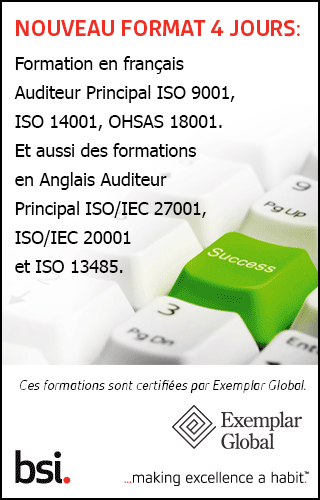
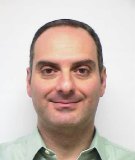
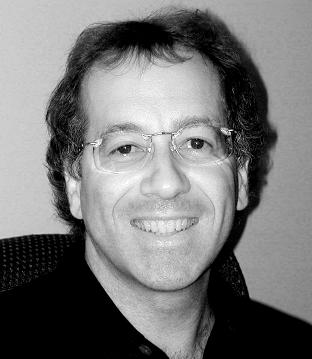
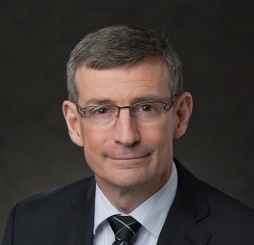
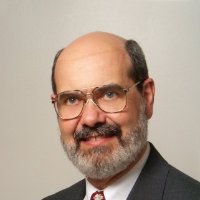 By
David Tozer,
ASQ CQE and SSBB, Education and Audit Chair
By
David Tozer,
ASQ CQE and SSBB, Education and Audit Chair